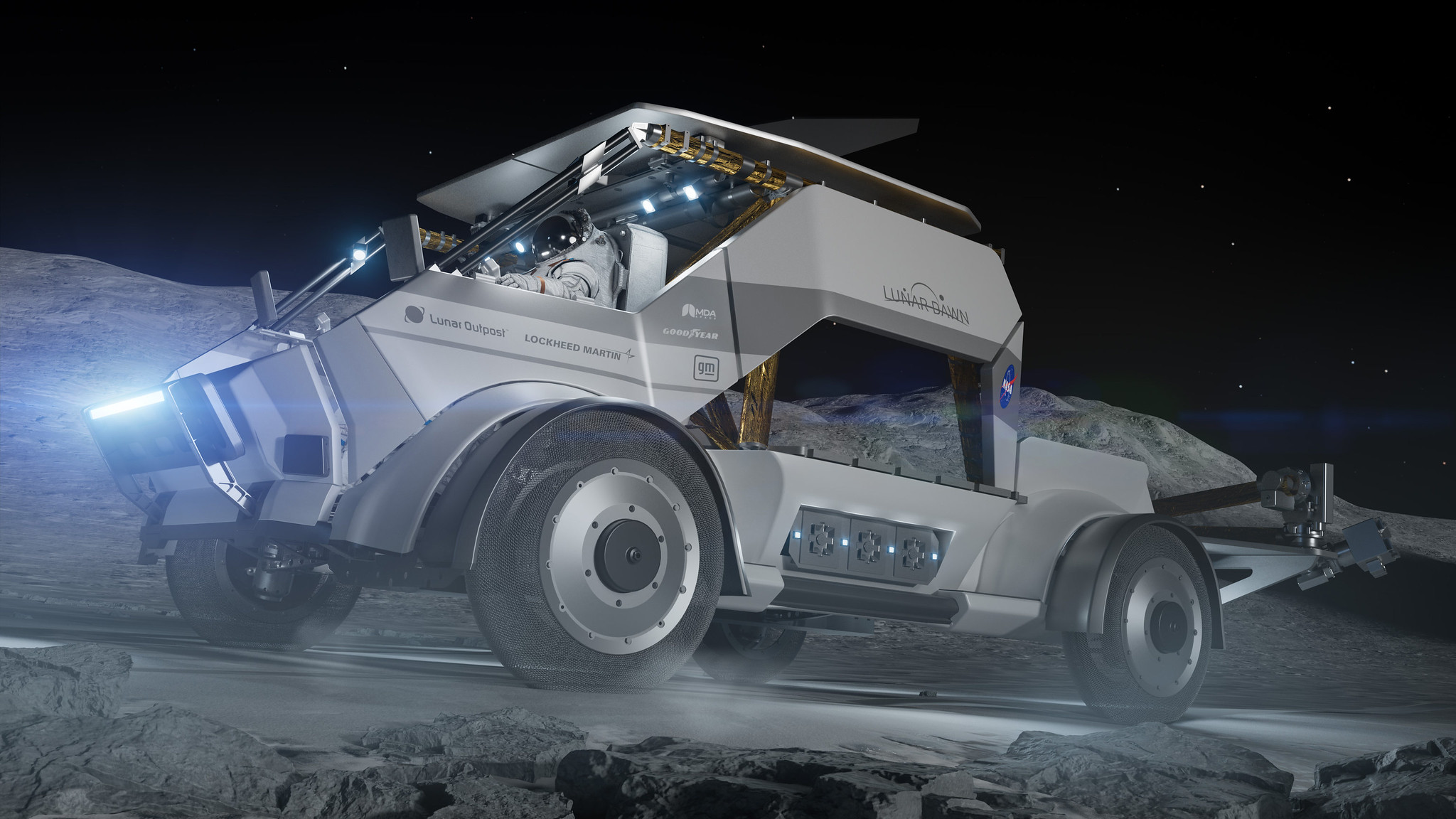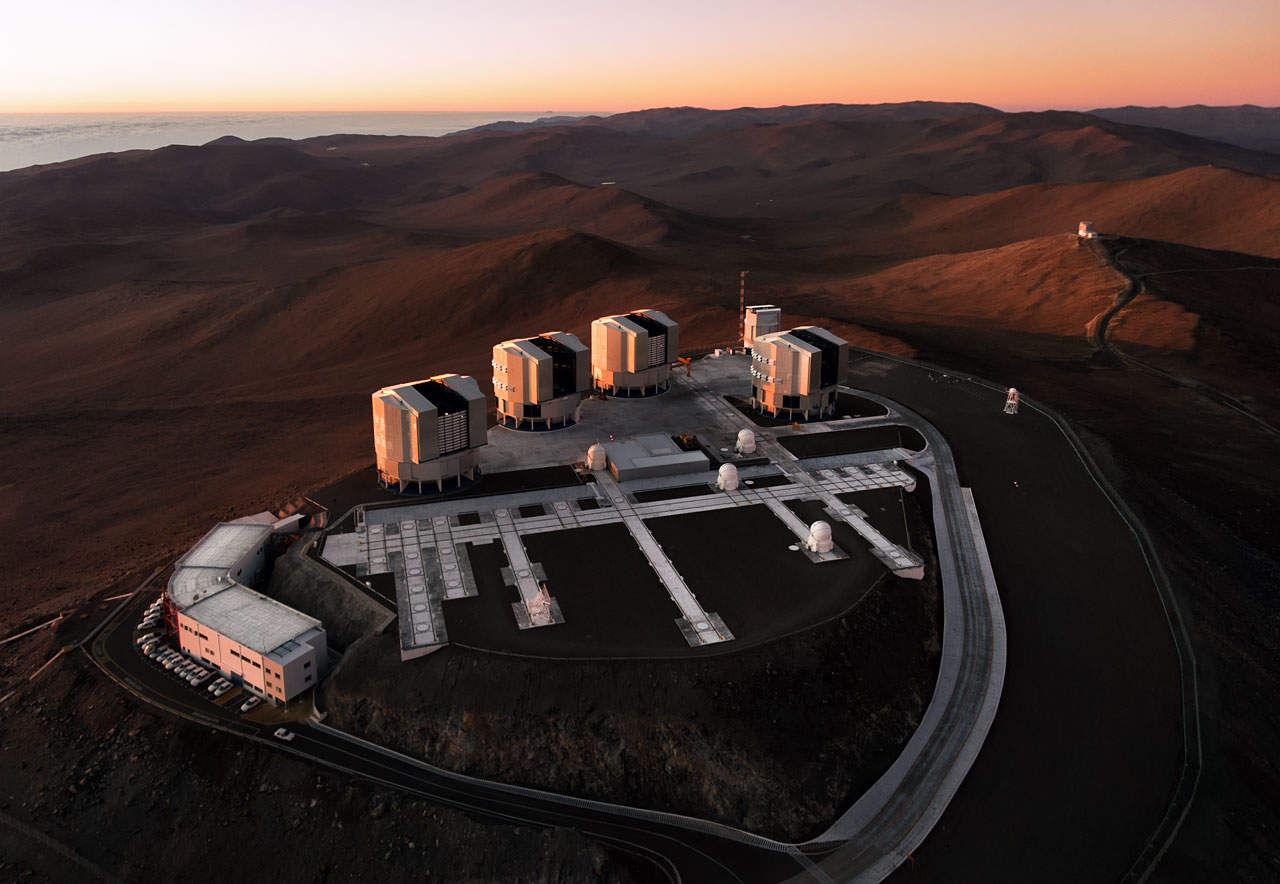NASA selects three companies to advance Artemis lunar rover designs

CAMBRIDGE, Mass. — NASA has selected three companies to work on lunar rover concepts that would be offered as a service for Artemis lunar landings and scientific activities.
NASA announced April 3 it picked teams led by Intuitive Machines, Lunar Outpost and Venturi Astrolab for its Lunar Terrain Vehicle (LTV) Services contract. The contract covers work to design and develop rovers that would be used by astronauts on Artemis missions starting with Artemis 5 at the end of the decade. The rovers would be provided by the companies to NASA as a service, in much the same way the agency is procuring spacesuits and lunar landers.
While the primary purpose of the LTV will be to transport astronauts across the lunar surface, NASA expects to also teleoperate the rover, allowing it to perform scientific investigations when astronauts are not present. “Think of a hybrid of the Apollo-style lunar rover that was driven by our astronauts and an uncrewed mobile science platform,” said Vanessa Wyche, director of NASA’s Johnson Space Center, at a briefing to announce the contract selections.
“The goal is to be able to conduct research with astronauts, move astronauts around, help them get to locations they wouldn’t otherwise be able to reach, and then to conduct continued exploration and science after they’ve departed,” said Jacob Bleacher, chief exploration scientist at NASA Headquarters.
Intuitive Machines is leading a team called Moon RACER, or Reusable Autonomous Crewed Exploration Rover, that includes AVL and Michelin from the automotive industry and Boeing and Northrop Grumman. The lander would be delivered on a Nova-D lander that Intuitive Machines is building, a larger version of the Nova-C lander that it landed on the moon in February.

Lunar Outpost, a startup currently working on four small robotic rovers, is leading a team called Lunar Dawn that includes Lockheed Martin, MDA Space, General Motors and Goodyear. While Lockheed and MDA Space will provide expertise in spacecraft design and robotics, GM will offer battery and related automotive technologies and Goodyear will provide tires.
Venturi Astrolab is offering its FLEX rover, a robotic version of which it plans to send to the moon on a SpaceX Starship mission in late 2026. It is working with Axiom Space and Odyssey Space Research on its LTV award.
Executives with the three winning companies did not offer many technical details about their rovers, in part because they still have work to do refining their design. “There are a number of the subsystems that we have put in as the initial design that will be traded” over the next year, said Steve Altemus, chief executive of Intuitive Machines. Those subsystems, he said, range from power to the rover’s suspension system.
Jaret Matthews, chief executive of Astrolab, noted the company has built a full-sized terrestrial prototype of its FLEX rover that it has driven for thousands of hours, including field tests in Death Valley, California. “We’re coming into this with a lot of experience already with the technologies we’re planning to apply here,” he said. “We intend to exceed NASA’s requirements.”
Justin Cyrus, chief executive of Lunar Outpost, cited competitive factors for not going into specifics about the design, other than to emphasize the Goodyear-developed tires. “I’m really excited to see how they can bring some of the technology that we’re using as part of LTVS back down here to Earth,” he said. “I want a set of those tires for my own offroad vehicle.”

Maintaining competition
While the overall LTV Services contract has a maximum value of $4.6 billion over 15 years, the three companies have so far received only small task orders for what Lara Kearney, manager of NASA’s Extravehicular Activity and Human Surface Mobility Program, called a “feasibility phase” to mature the rovers’ designs to a preliminary design review over the next year.
She declined to give the value of those task orders because the agency was still in a procurement “blackout” period. However, Intuitive Machines said in its release about the contract that its task order was worth $30 million.
After those feasibility studies, NASA will solicit proposals from the three companies for a “demonstration” task order. That would support final development of the rover and delivery to the south polar regions of the moon, where it would be tested remotely before the Artemis 5 mission arrives.
Kearney said NASA expects to select only one of the three companies for the demonstration task order. Afterwards, it will purchase LTV services from the company on an annual basis for both crewed and uncrewed rover activities.
NASA, in its embrace of commercial services, has emphasized competition, with two or more providers for cargo and crew transportation to the International Space Station as well as the Human Landing Services program for crewed Artemis landers and development of Artemis and ISS spacesuits. NASA approach for LTV, though, suggests it will rely on a single company.
Kearney said NASA’s current approach “is based on available budgets,” but added there may be opportunities for future competition. “This contract mechanism is extraordinarily flexible,” she said, with the ability to award more task orders as well as an on-ramp clause to bring on new providers. “We have a contract mechanism that will allow companies to continue to compete for future demonstrations and service periods.”
NASA declined to disclose the number of LTV proposals it received, citing a procurement blackout. However, entries in a federal procurement database for the contract indicate the agency received nine proposals, but does not identify the losing bidders.
One company not selected that previously said it was interested in the LTV competition was Leidos, which unveiled a prototype of its rover design nearly a year ago, working with both automotive and aerospace companies. Another partner was racing company NASCAR, which Leidos said it brought in both for its technical expertise as well as its experience with corporate sponsorships.
A company that develops an LTV rover for NASA will also be able to offer it to non-NASA customers. “We believe in the early phase that NASA will have to be somewhat of an anchor tenant,” Kearney said. “We hope that, over the 10-year operating life of this vehicle, we can start bringing in more and more commercial requests as the market evolves.”
She said NASA expects initially to use 75% of the rover’s capacity for crewed or robotic operations, with the remaining 25% available for commercial uses. Over the course of the contract, NASA anticipates its share of rover time will decline as commercial demand grows.
Bleacher said he was eager to see how LTV could advance lunar science, either by supporting astronauts or through robotic operations. “I like to imagine the views and the vistas that the LTV will enable us to see from the surface of the moon,” he said. “Its mobility will fundamentally change our view of the moon.”
Related
Read the original article here




